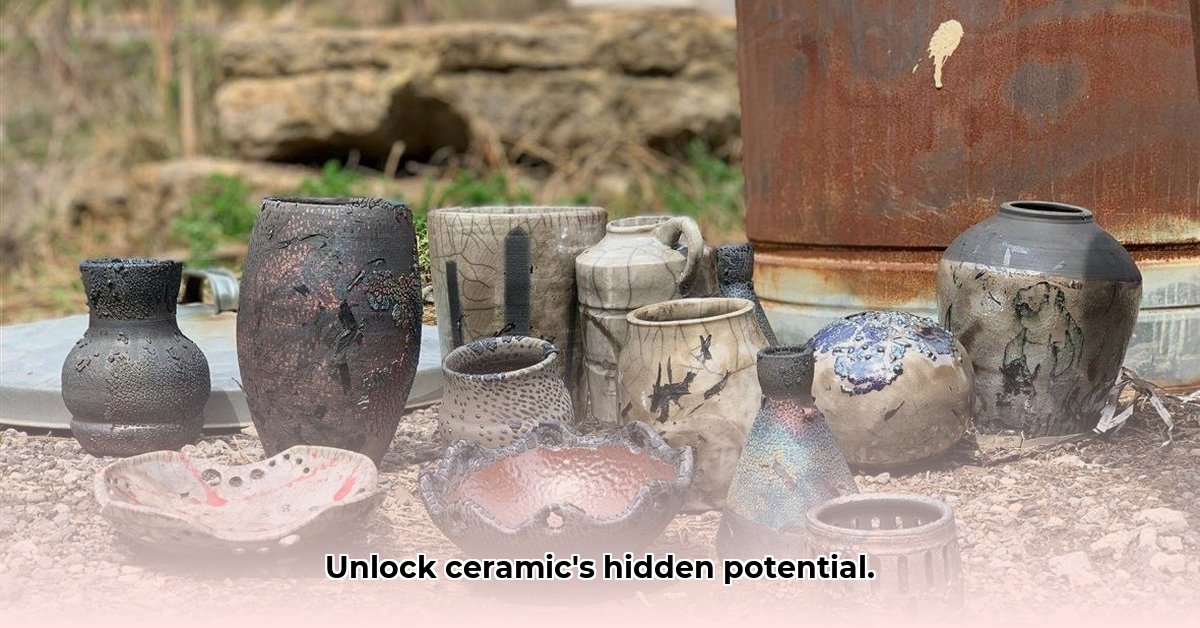
A Thriving Ceramics Community: The Standard Clay Carnegie Effect
Imagine a 53,000-square-foot haven where the scent of clay and the hum of creativity intertwine—Danielle McDaniel's "The Clay Lady's Campus" in Nashville. This phenomenal success story is a direct result of Standard Clay Carnegie's profound influence. It's not merely about constructing a larger studio; it's about cultivating a thriving community. This remarkable growth is no accident; it's a testament to Standard Clay Carnegie's unwavering dedication to fostering a grassroots movement, inspiring artists, and creating a ripple effect of creative energy transforming the ceramics landscape. How many artists, inspired by just one successful example facilitated by Standard Clay's resources, could spread this enthusiasm to their own communities?
Nurturing the Future of Clay: A Young Talent Showcase
Standard Clay Carnegie isn't solely focused on established artists; they are actively cultivating the next generation of ceramic masters. Their annual High School Students Exhibition is a prime example of this commitment. Picture a vibrant atmosphere filled with young, talented artists, their creations proudly displayed. These exhibitions, judged by renowned ceramic artists like Jerry Wagner, are more than just competitions—they serve as powerful catalysts for growth. They provide invaluable experience, exposure to industry professionals, and the confidence to pursue artistic passions. Isn't investing in the future of ceramic art, nurturing the seeds of future innovation and artistic expression, a goal worth supporting? These are the young artists who will shape the future of ceramic art.
Strategic Partnerships: Building a Stronger Ecosystem
Standard Clay Carnegie's success isn't solely attributed to its internal initiatives. They understand the power of collaboration and have forged several pivotal partnerships significantly impacting the ceramics world. Beth Morean's contribution to the St. Petersburg ceramic arts scene exemplifies this. Her involvement has transformed St. Petersburg into a recognized center for ceramic artists, attracting talent and boosting the local economy. These partnerships aren’t merely financial; they're about building a robust support network, elevating the entire ceramic arts ecosystem, and creating more vibrant local communities. This collaborative approach benefits everyone—artists, communities, and the art form itself. Isn't this a model worth emulating throughout the field?
Measuring Success: Growth, Gaps, and the Need for More Data
While stories like Danielle's and Beth's vividly illustrate significant growth, a broader perspective is necessary. Anecdotal evidence strongly suggests a surge in interest and participation, yet comprehensive national statistics remain scarce. This lack of data hinders a complete understanding of the growth's extent and any regional disparities. Further research is crucial to gather more comprehensive data, providing a clearer picture of participation rates, economic impact, and trends across different regions. This is essential for future planning and resource allocation. What data points are missing that would provide a more complete picture?
A Roadmap for Continued Success: Actionable Steps for Growth
Standard Clay Carnegie's impact isn't accidental; it's the result of careful planning and strategic action. Several key steps are essential for continued growth and sustainability:
Standard Clay Carnegie (Short-Term): Enhance online presence, develop advanced workshops, and improve logistical processes. (Long-Term): Explore national partnerships, consider franchise models, diversify product offerings, and implement comprehensive data collection.
Ceramic Artists (Short-Term): Utilize Standard Clay Carnegie resources; actively participate in exhibitions and networking. (Long-Term): Seek grants and funding; diversify artistic portfolios; develop effective online sales strategies.
Educational Institutions (Short-Term): Integrate ceramics into curricula; partner with Standard Clay Carnegie. (Long-Term): Develop specialized ceramic arts programs; secure funding to enhance resources; support student participation in exhibitions.
Local Governments (Short-Term): Support local arts centers; provide tax incentives for artists; fund public art projects. (Long-Term): Designate spaces for ceramic arts; encourage artist residencies; support community-based ceramic projects.
Community Members (Short-Term): Take introductory ceramics classes; attend exhibitions; support local ceramic artists. (Long-Term): Participate in community projects; advocate for increased arts funding.
The Future of Clay: A Vision of Continued Growth
Standard Clay Carnegie is more than a supplier of clay and kilns; it’s a catalyst for a thriving community. Their dedication to fostering creativity, collaboration, and education ensures a bright future for the ceramic arts. By nurturing local artists, promoting educational opportunities, and fostering community engagement, Standard Clay Carnegie plays a vital role in the continued growth and vitality of this expressive art form. The future of ceramics is bright, and Standard Clay Carnegie is at the forefront, shaping that future. How can we all participate and contribute to this exciting growth?